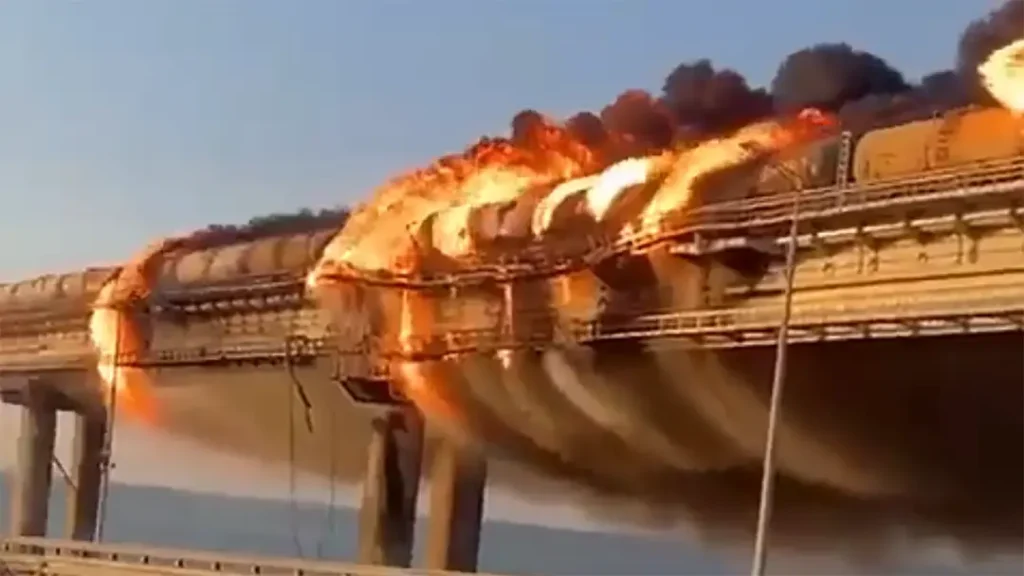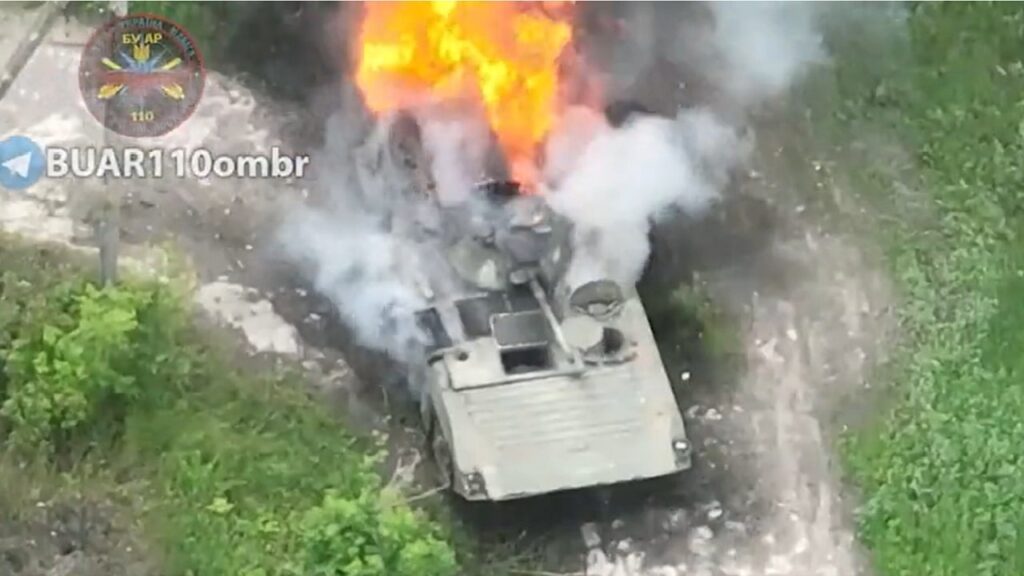It has been 229 days since the Russian invasion of Ukraine began. On Monday, Russian forces are striking all across Ukraine in retaliation for the partial destruction of the strategic Kerch Bridge.
Kerch Bridge and a tour of the battlefield
Over the weekend, the Kerch Bridge that links Crimea with Russia was partially destroyed, thus restricting the number of supplies that the Russian forces can transfer to the illegally-annexed peninsula and from there to the rest of Ukraine.
The Russian forces are also upping the pressure in the south of the Donbas in the direction of Bakhmut. In the last 24 hours, the Ukrainian forces claim to have repelled over 30 attacks against their positions near Bakhmut and Avdiivka, farther in the south. The Russian military is desperately trying to capture Bakhmut so as to give the battered Russian invasion a much-needed victory.
In the east, the Ukrainian military continues to push east of the Oskil river and is nearing Svatove from the south. The Ukrainian forces also repelled several Russian counterattacks in the east in the direction of Lyman.

Related: How Russia’s culture of lies is dooming Putin’s invasion of Ukraine
Russian casualties
Every day, the Ukrainian military is providing an update on their claimed Russian casualties. These numbers are official figures and haven’t been separately verified.
However, Western intelligence assessments and independent reporting corroborate, to a certain extent, the Ukrainian casualty claims. For example, the Oryx open-source intelligence research page has visually verified the destruction or capture of more than 1,200 Russian tanks (which amounts to more tanks than the combined armor capabilities of France, Germany, Italy, and the United Kingdom) and more than 5,300 military vehicles of all types; this assessment has been confirmed by the British Ministry of Defense.
The same independent verification exists for most of the other Ukrainian claims. Recently, the Pentagon acknowledged that the Russian military has lost thousands of combat vehicles of all types, including over 1,000 tanks, and dozens of fighter jets and helicopters.
Furthermore, more recent reports that are citing Western intelligence officials indicate that the Russian military has suffered up to 50,000 casualties (killed and wounded) in the war so far.
Related: Russia’s Wagner Group: An orchestra of violence

In the summer, Sir Tony Radakin, the British Chief of the Defence Staff, recently told the BBC that the West understands that more than 50,000 Russian troops have been killed or wounded in the conflict thus far. If we were to take the Ukrainian figures as accurate, the number mentioned by Sir Radakin is on the low side of the spectrum.
Yet, it is very hard to verify the actual numbers unless one is on the ground. However, after adjusting for the fog of war and other factors, the Western official numbers are fairly close to the Ukrainian claims.
As of Monday, the Ukrainian Ministry of Defense is claiming the following Russian casualties:
- 62,500 Russian troops killed (approximately three times that number wounded and captured)
- 5,133 armored personnel carriers and infantry fighting vehicles destroyed
- 3,890 vehicles and fuel tanks
- 2,486 tanks
- 1,477 artillery pieces
- 1,086 tactical unmanned aerial systems
- 266 fighter, attack, and transport jets
- 348 Multiple Launch Rocket Systems (MLRS)
- 235 attack and transport helicopters
- 247 cruise missiles shot down by the Ukrainian air defenses
- 180 anti-aircraft batteries
- 136 special equipment platforms, such as bridging equipment
- 15 boats and cutters
- four mobile Iskander ballistic missile systems
For most of May, the Russian military suffered the greatest casualties around the Slovyansk, Kryvyi Rih, and Zaporizhzhia areas, reflecting the heavy fighting that was going on there. As the days and weeks went on, most of the heavy fighting shifted toward the direction of Bakhmut, southeast of Slovyansk, around Severodonetsk, Lyman, and Lysychansk.

Then the location of the heaviest casualties shifted again westwards toward the area of Kherson and Zaporizhzhia — where one of Europe’s largest nuclear plants is located — as a result of a Ukrainian counteroffensive in and around the area.
Then, the concentration of casualties once more shifted back to the Donbas, especially in and around Severodonetsk and Lysychansk, the two urban centers the Russians managed to capture in July. For most of August, the heaviest fighting took place in the Donbas, where the Russian forces unsuccessfully tried to breach the Ukrainian defenses and capture the Donetsk province. But lately, most of the fighting has shifted to the south where the Ukrainian military is mounting a major counteroffensive to recapture Kherson. It is now there, on the southern front, that the Russian military is suffering the heaviest casualties.
On Monday, Ukrainian forces continued to inflict the heaviest in the direction of Kramatorsk, which is located in the central Donbas, and in the vicinity of Avdiivka, and close to Kryvyi Rih.
The stated goal of the Russian military for the renewed offensive in the east is to establish full control over the pro-Russian breakaway territories of Donetsk and Luhansk and create and maintain a land corridor between these territories and the occupied Crimea.
Feature Image: The railway section of the Kerch Bridge that connects Crimea to Russia on flames. (Twitter)

